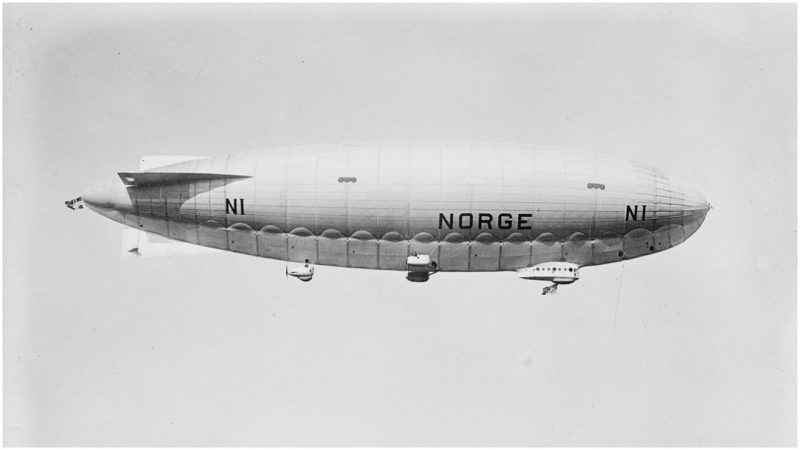Roald Amundsen was, without dispute, the first expedition leader to reach the South Pole on foot, but among his many successful adventures, there is the first journey of any kind to the North Pole. He and a group of 15 other men embarked on an Italian-made airship in 1926 and successfully made a flight over the North Pole. The Norge, led by Amundsen, became the first aircraft to reach the North Pole. Here’s how they did it.
In the 1920s, everybody saw the potential of the airship. It was a new flying invention that offered many possibilities for research, travel and even warfare. Amundsen was one of those who saw its potential, and in 1925 he came up with the idea to fly over the North Pole with one of these machines. At that time, airships had many advantages over planes. Airplanes had to immediately land in case of an engine defect; the airship’s engines could be repaired in mid-air. Also, landing a plane during very foggy weather was much more dangerous in an airplane. Airships were also capable of carrying more weight than ordinary planes at the time.
Amundsen and his friend Hjalmar Riiser-Larsen (the founder of the Royal Norwegian Air Force), who would later also be part of the expedition, decided that the best airship for this mission was the Italian-made airship N-1, designed by Umberto Nobile, an Italian aeronautical engineer who designed the most advanced semi-rigid airships at the time. The N-1 was the first of the N-class semi-rigid airships that Nobile made.
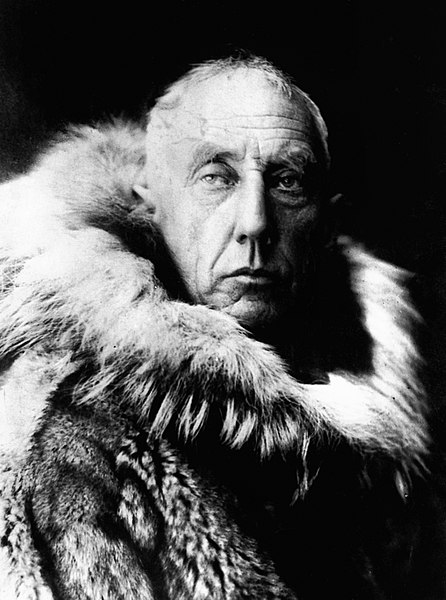
Amundsen contacted Nobile and told him his idea for a polar expedition with an airship. Later in 1925, Riiser-Larsen went to Rome to meet with Italian government officials and Nobile, and make a deal for the purchase of the N-1. An agreement was reached. The Italians settled to sell the airship for $75,000, but under the condition that they could buy it back later for $46,000.
Like any other expedition, Amundsen’s flight over the North Pole was expensive. Money was not only needed for the airship, but also for the infrastructure required to accommodate it and maintain it, and also for all of the necessary resources during the actual flight. Luckily, Lincoln Ellsworth, a famous American polar explorer, heard about Amundsen’s plan and decided to step in with a generous donation of $100,000. This way, besides Nobile, who was the designated pilot of the airship, Riiser-Larsen, who was going to be the navigator, and Amundsen as the expedition leader, Ellsworth got his place on board the airship. The expedition was named “The Amundsen-Ellsworth-Nobile Transpolar Flight.” It was decided that the rest of the expenses, such as transportation costs to Ny-Ålesund (the starting point of the journey) and the building of the hangar and masts for the airship, were going to be covered by the Norwegian Aviation Society. The society was also the official owner of the airship during the flight.
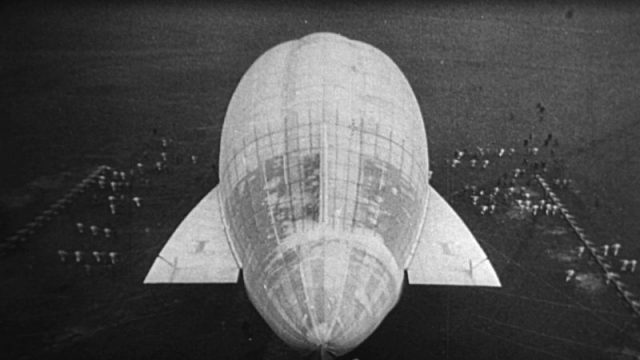
In order to make the airship more durable in the extreme conditions of the northernmost region of the Earth and make it more suitable for the mission ahead, certain modifications were made. First of all, they removed the original cabin, which was very large and overly decorated. A smaller and lighter pilot cabin was installed. This way the weight of the vessel was reduced and more space was made for the crew and their resources. Other modifications included reinforcement of the nose and tail of the pressurized balloon with metal a framework, connected with a tube-like metal keel which also served as the storage room and crew accommodation. This tube was covered with some sort of fabric in order to make the space inside more comfortable and warm.
The refitted airship was officially given to the Norwegian delegation on March 29, 1926. There was a big ceremony, at which the notorious Italian prime minister Mussolini was present. Apparently, he saw this event as a great opportunity to spread a message about the powers of fascism. During the ceremony, the airship was renamed. It was given the name Norge.
Norge’s maiden flight was to Ny-Ålesund, from where the final phase of the journey was supposed to be made–one that would take Amundsen over the pole. On May 11, 1926, Amundsen and his 15 crewmen (together with Nobile’s pet dog Titina) set off over the vast ice sheet.
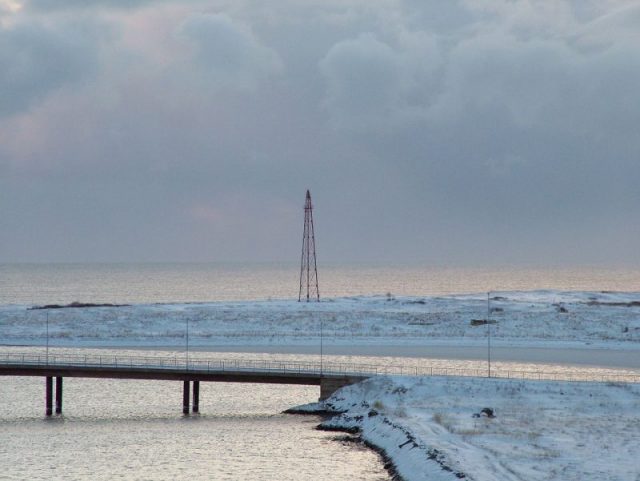
The following day, at 01.25, Norge reached the North Pole. Since the crew couldn’t land, they lowered down the flags of their respective countries (Norwegian, American, and Italian). Living in a tightly confined space with 15 other people is not easy even for an experienced explorer. During the trip to the pole, Amundsen’s and Nobile’s friendship deteriorated, and it got even worse after the flag-lowering ceremony: Amundsen noticed that Nobile’s Italian flag was slightly bigger than the other and the two of them started arguing. Amundsen also complained that with Nobile on board, the whole airship looked like a big circus.
Besides the hostility between Amundsen and Nobile, the airship had a bigger problem. A fog that was surrounding it got stuck on the hull and ballooned in the form of ice. Soon, those ice pieces were thrown from the engine propellers as ice missiles towards the gentle balloon. The crew was constantly repairing the balloon, and they were running out of the material needed for the repairs. They flew over the Atlantic Ocean and reached the North Pole, but they still needed to make a safe landing somewhere close to civilization. On May 13, they flew over the city of Wainwright, Alaska, where Amundsen had been during his 1922 attempt to fly over the North Pole with a plane. Unfortunately, a storm blew the airship back and forth from its route while they were flying somewhere over Siberia and it managed to return them to Alaska. Amundsen and his navigator didn’t see the exact position of Norge, but they decided to land anyway. They chose a big ice field near a settlement. On May 14, after 72 hours of flight, they landed near the village of Teller, 95 miles northwest of Nome.
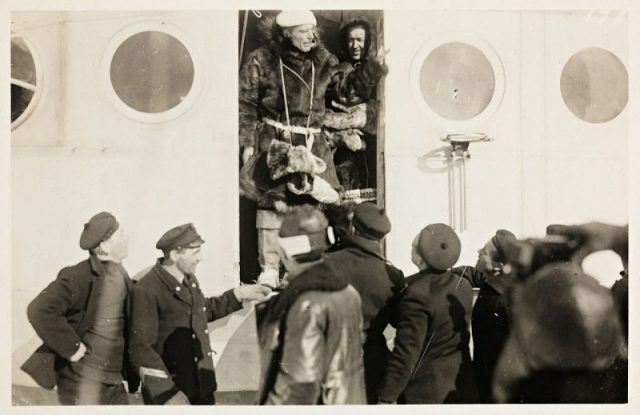
From there, the crew made their slow return back to Norway. Amundsen wasn’t in a big mood to celebrate. He despised the idea of his Italian friend receiving so much attention. Nevertheless, he should have been happy; after all, he made the first trip to the North Pole, and he was its undisputed conqueror. To make this journey even more significant, it is worth mentioning that Norge became the first flying machine to fly over the ice cap between Europe and North America.
The fate of Norge is sad. After the flight, somewhat damaged, it was dismantled and it was supposed to be sent back to Italy. This never happened, and its parts ended up in different places over the years. It’s a pity we can not see it in a museum today.
Destiny sometimes decides to play unfortunate games, and it played one on Amundsen too. In 1928, Nobile decided to repeat the success of the Norge and launched his own, purely Italian, North Pole expedition in an airship named Italia. This expedition ended tragically. The Italia crashed, and people died. A rescue mission was organized and Amundsen, as one of the most experienced polar explorers, was part of it. But Amundsen’s plane disappeared, and since then his destiny is unknown. The search for the missing plane was called off in September 1928 by the Norwegian government.
